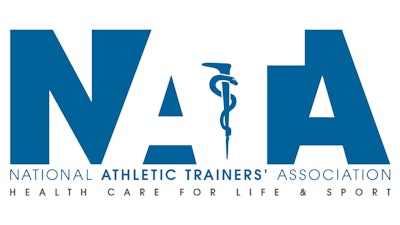
On Wednesday morning, the National Athletic Trainers Association hosted ‘The Year in Youth Sport Specialization: Emerging Trends & Recap in Research: A Total Body Health Approach’ webinar.
Panelists included methodology researchers, athletic trainers actively working in the field and professors of athletic training. The event was led by A.J. Duffy, the current NATA president. These subject matter experts discussed the rise in youth sports specialization — youth athletes who dedicate themselves to one particular sport rather than sampling several sports. As some panelists commented, this field is a relatively new area of study, with initial studies dating back to 2015.
The panelists said that for many years, a misconception has existed that young athletes must pick one sport and specialize in it to reach an elite level of play. This misconception has resulted in athletes who play school sports, club sports and receive private lessons all in one area, leading to burnout, overuse injuries and a lack of diverse physical development. Some panelists found these elements most often in baseball, softball, swimming and basketball.
Many associate early specialization with family pressures and some may point to “the brothers in the NFL, like the Kelce brothers, the Watt brothers,” said Hayley Root, but in reality, she says, “they all talk about the variety of sports they played growing up.” Root is an assistant professor at Northern Arizona University in Phoenix. The same exists for Olympic-level athletes. For example, the Olympic track runner Hobbs Kessler started as a rock climber. Grant Fisher was a soccer player before he medaled in the 5,000 and 10,000 meters. They serve as examples that early specialization is not necessary.
The panelists were all in agreement that there is more than one path toward an elite level of play. In fact, sampling several sports is a valuable path that can help athletes avoid burnout and remain healthy.
The panelists also discussed the mental health component of supporting athletes who specialize in one sport from a young age. Michael Prybicien, athletic trainer at Passaic High School, said he sees the mental side of his school’s athletes every day. There is evidence of increased anxiety and reduced sleep in these athletes. Prybicien said that he tries to create an open and honest environment where student-athletes can talk about how they feel mentally.
In determining sports participation for youth athletes, NATA presented the following recommendations:
- Delay specializing in a single sport for as long as possible
- One team at a time
- Less than eight months per year
- No more hours of practice per week than the age of the child
- Two days of rest per week
- Rest and recovery time from organized sport participation
“I don’t think sports specialization is going anywhere, so we need to train students and coaches on doing this in a health environment and mitigate injuries that may come from sports specialization,” said Mayrena Isamar Hernandez, assistant professor in athletic training, Sam Houston State University.





































